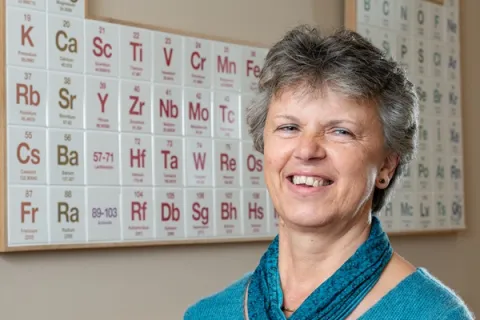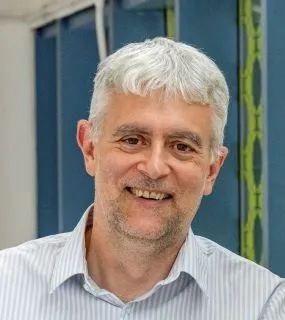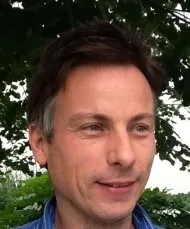Project overview
Thermoelectric micro-generators are solid state devices that can provide constant sources of electricity. They have a number of very favourable features, i.e. no mechanical parts that can wear out, require little maintenance, have long lifetimes and produce no emissions. Solid-state thermoelectric devices are based upon one of two phenomena, the Seebeck effect, which can be used for power generation (energy harvesting), and the Peltier effect for electronic cooling or heating. In order to produce a functional thermoelectric device, an n-type doped material is connected electrically in series and thermally in parallel across a temperature differential to a p-type doped material, so that current flows between the two. Bismuth telluride based thermoelectric materials are very well suited for near room temperature applications, including wireless sensing. Through recent research supported by STFC, we have developed a new series of molecular precursor compounds which can be used in chemical vapour deposition to produce high quality thin films of (n-type) bismuth telluride and (p-type) antimony telluride. Unusually, our precursors and CVD-based system allows the materials to be deposited very selectively onto specific areas of lithographically patterned substrates. The focus of this project is to work closely with key stakeholders, including a thermoelectric device company and a specialist precursor manufacturer, to exploit the unique features of our precursors and CVD-based approach so that the production costs for manufacture of thermoelectric micro-generators can be reduced significantly. Since the actual production costs account for the majority of the unit cost per thermoelectric generator, reducing this is a high priority to allow penetration of these micro-generator devices into new and larger markets.
Staff
Lead researchers
Other researchers
Research outputs
Daniel W Newbrook , Stephen P Richards, Victoria Greenacre, Andrew L. Hector, William Levason, Gillian Reid, C.H. De Groot & Ruomeng Huang,
2020, Journal of Alloys and Compounds, 848
Type: article
Daniel W Newbrook , Stephen P. Richards, Victoria Greenacre, Andrew L. Hector, William Levason, Gillian Reid, Cornelis De Groot & Ruomeng Huang,
2020, ACS Applied Energy Materials, 3(6), 5840-5846
Type: article
Daniel W Newbrook , Ruomeng Huang, Stephen P. Richards, Shivank Sharma, Gillian Reid, Andrew L. Hector & Cornelis De Groot,
2019, Journal of Physics: Energy
Type: article
[Ge(TenBu)4]-a single precursor for the chemical vapour deposition of germanium telluride thin films
Samantha, Louise Hawken, Ruomeng Huang, Cornelis De Groot, Andrew L. Hector, Marek Jura, William Levason & G.B.G. Stenning,
2019, Dalton Transactions, 48, 117-124
DOI: 10.1039/C8DT03263G
Type: article
Sophie Benjamin, Cornelis De Groot, Chitra Gurnani, Samantha, Louise Hawken, Andrew L. Hector, Ruomeng Huang, Marek Jura, William Levason, Eleanor Reid, Gillian Reid, Stephen Richards & Gavin B.G. Stenning,
2018, Journal of Materials Chemistry C, 6(29), 7734-7739
DOI: 10.1039/C8TC01285G
Type: article
Chitra Gurnani, Samantha, Louise Hawken, Andrew L. Hector, Ruomeng Huang, Marek Jura, William Levason, James Perkins, Gillian Reid & Gavin Stenning,
2018, Dalton Transactions, 47(8), 2628-2637
DOI: 10.1039/C7DT03848H
Type: article
Ruomeng Huang, Sophie Benjamin, Chitra Gurnani, Yudong Wang, Andrew Hector, William Levason, Gill Reid & C.H. (Kees) de Groot,
2016, Scientific Reports, 6, 1-10
DOI: 10.1038/srep27593
Type: article


